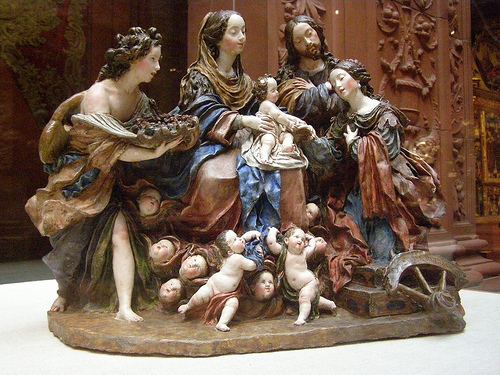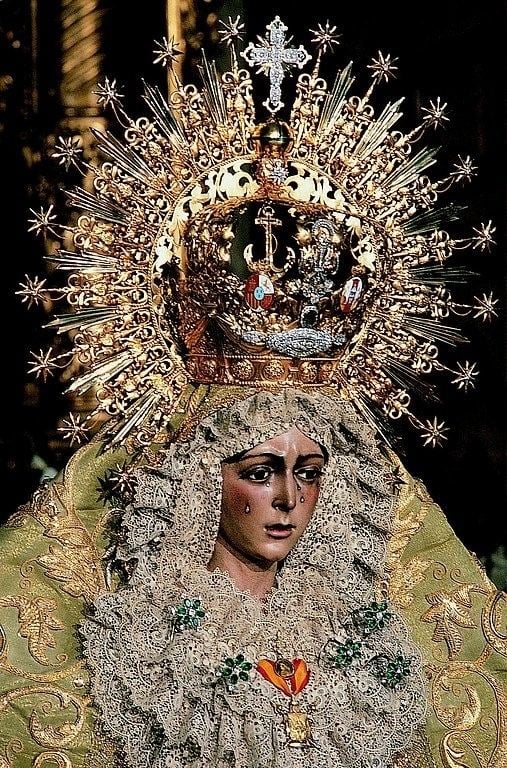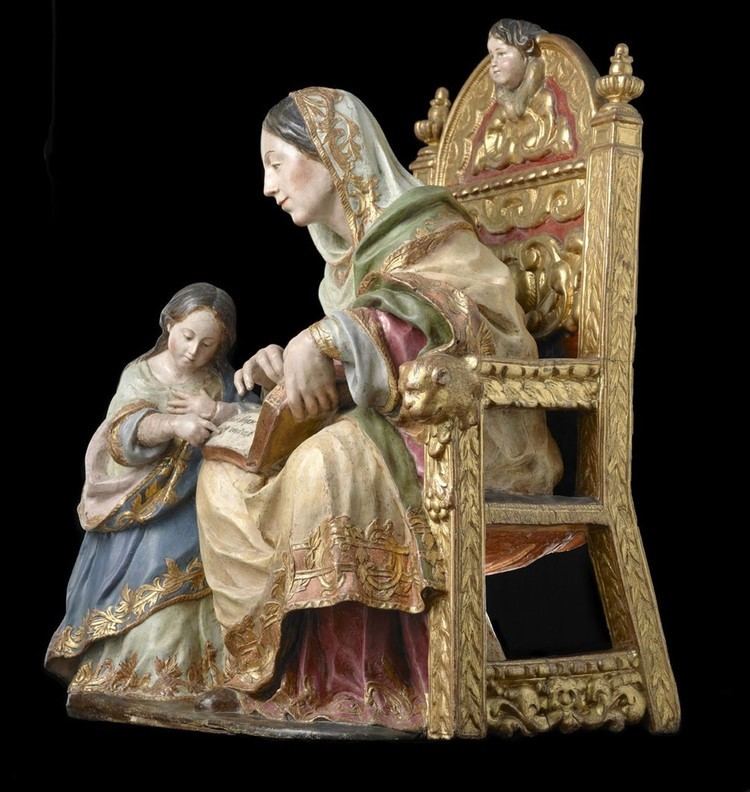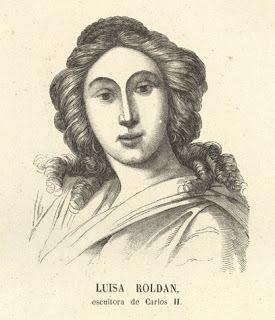Nationality Spanish | Role Artist Name Luisa Roldan | |
 | ||
Education Her father, Pedro Roldan Similar People Charles II of Spain, Maria Luisa of Parma, Maria Christina of the Two S, Francis - Duke of Cadiz, Louis I of Spain | ||
Aerografia artistica luisa roldan wmv
Luisa Ignacia Roldán (8 September 1652 – 10 January 1706), called La Roldana, was a Spanish female sculptor of the Baroque Era. She is the first woman sculptor documented in Spain.
Contents
- Aerografia artistica luisa roldan wmv
- ARTH 4117 Northern Baroque 5 Luisa Roldn Spanish
- Life
- Works
- References

Because of the quality of her work—Antonio Palomino considered her as important a sculptor as her father— In spite serving as the court sculpor, like many artists of her time she died poor, signing a declaration of poverty shortly before her death.
ARTH 4117 Northern Baroque 5: Luisa Roldán (Spanish)
Life

Roldán was born in Seville, the daughter of sculptor Pedro Roldán, and she was taught by her father along with her siblings. After she married a sculptor, Luis Antonio de los Arcos, she worked in Cadiz from 1686 to 1688. Her marriage to de Los Arcos was against her father's wishes. Santiago Montoto, writing in 1920, went so far as to characterize it as an "abduction" ("rapto"), perhaps revealing his lack of understanding of marriage customs of the period. Two of her sisters and one brother also encountered parental disapproval of their chosen partners.
She created wooden sculptures as well as statues for the Cathedral of Cadiz and the town council. In 1688 she moved to Madrid, where she became court sculptor in 1692, serving Charles II and Philip V; she also served the Duke of Infantado and was admitted at the end of her life to the Accademia di San Luca. Nonetheless, she died in poverty in Madrid.

Roldán had seven children, of whom two survived to adulthood.
Works

Her works are strongly characterized as possessing "clearly delineated profiles, thick locks of hair, billowing draperies, and mystical faces with delicate eyes, knitting brows, rosy cheeks, and slightly parted lips." The 'knitted brows' that are sometimes noted in her terracotta angels are not usually seen in her works in wood, which are characterised by open, evenly arched brows. Her St. Ginés de la Jara, made around 1692, is now at the Getty Center. Unlike the billowing cape of her St Michael in El Escorial, the robe worn by the Getty's San Gines is very still. Processional statues whose creation can be safely attributed to her include statues of the Virgen de la Soledad, Mary Magdalen, and Jesus. In Cadiz, works by her include statues of Anthony of Padua, Ecce Homo, and Saints Servandus and Cermanus.
Roldán was a prolific sculptor. Much of her work was religious sculpture for churches, and while living in Madrid she also made small terracotta works popular with the petty bourgeoisie. Her pieces were widely distributed in Andalusia, as well as in Madrid, Móstoles and Sisante (Province of Cuenca), New York, London, Ontario, Los Angeles and Chicago.
The following are among her most noted works that remain in churches:
A figure of Mary Magdalene in Cádiz was destroyed by fire at the outbreak of the Spanish Civil War in 1936.
Other notable works are in collections and museums:
